

Picking the perfect hiking shoes is important. You want them to fit well and use lightweight, durable materials. Look for excellent traction, arch support, breathability and toe protection too.
Many hikers love trail runners now thanks to comfort and flexibility advantages from new technology. Bulky boots aren’t always necessary.
But choosing poorly could lead to blisters, lack of arch support, or slipping – no fun!
Don’t stress though, our guide will help you pick the best hiking shoes for women. We’ll point out top-rated shoes known for keeping feet happy on the trails.
Let’s get started.
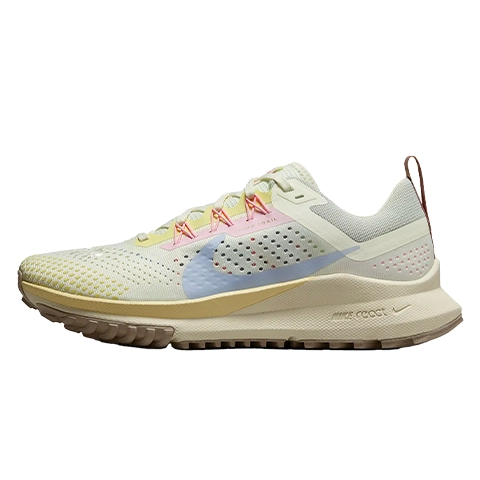
Key Specs
Weight: 7.65 ounces (217 grams) per shoe
Price: $$
PROS
✅ Ultralight
✅ Plenty room for the toes
CONS
❌ Narrow fit
These shoes are built sturdy yet breathable using input from real runners. They grip rocky ground well and provide a smooth ride.
Nike Flywire and React foam provide awesome support and energy as you move. The rubber sole designed by fellow hikers means excellent traction.
They take 1-2 days to fully break in. But after that, they get more comfortable with each wear. My wife wore them for hikes over uneven and gravelly terrain and loved them. They also performed great on pavement.
The fit is kinda narrow but leaves room for toes to chill. For hiking lightly, the Pegasus Trail 4 brings responsiveness, toughness, and support.
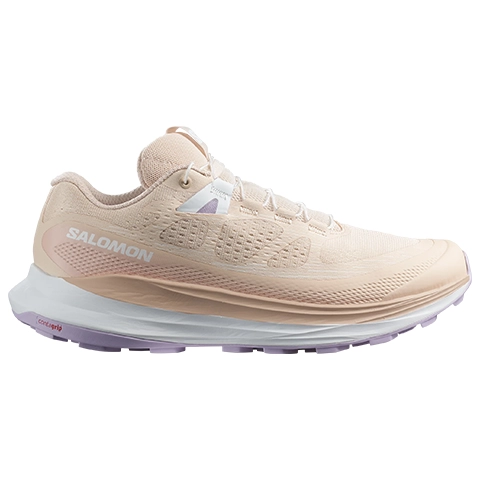
Key Specs
Weight: 9.42 ounces (267 grams) per shoe
Price: $$$
PROS
✅ Comfortable
✅ Great design
CONS
❌ Not the grippiest option
The Salomon Ultra Glide 2 is a great pick for comfortable outdoor adventures on all kinds of terrain. These shoes get praise for their awesome comfort and tread.
They stay cool when it’s hot out and fit securely on your feet. For long hikes, they give good support and are lightweight.
The grip balances well for different conditions. They handle various terrains effectively. One small issue is debris can get caught in the stretchy upper which needs occasional cleaning.
Overall these are designed for maximum trail comfort. The cushioning performed even better than we expected. With thick cushioning, some trail feel can be lost. But these let you feel the ground well despite the cushy platform.
One note is the toe box has only adequate room. Sizing up or getting a wide version could help for more toe splay.
The rubber soles gripped extremely well on all surfaces, wet or dry. In our testing they didn’t slip even on wet mossy rocks.
For trail comfort across different terrains, the Ultra Glide 2 delivers.
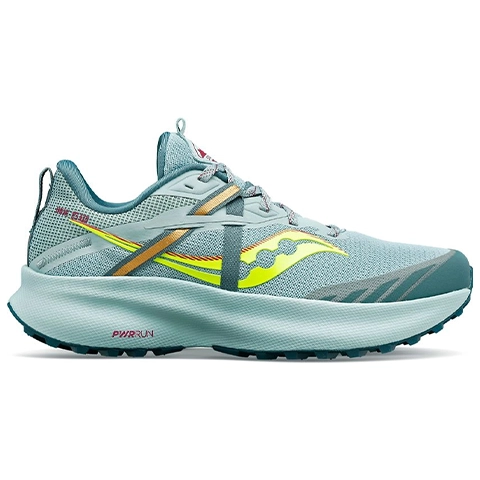
Key Specs
Weight: 7.9 ounces (224 grams) per shoe
Price: $$
PROS
✅ Relatively affordable
✅ Good quality
CONS
❌ Runs large
The Saucony Ride 15 TR emerges as a premier choice for hikers seeking comfort and performance. Engineered to elevate the hiking experience, these shoes excel across diverse terrains with advanced cushioning and dependable traction.
One downside is the laces are frustratingly narrow and twist prone, requiring more time to lace up properly compared to other Saucony models with thicker laces. Finding the optimal lace tension remains an ongoing process.
We recommend ordering a half size down for ideal fit. By effectively reducing heel discomfort, the Ride 15 TR showcases its exceptional quality. The lightweight yet durable construction makes this shoe a compelling outdoor partner.
For hikers prioritizing comfort without sacrificing responsiveness, the Saucony Ride 15 TR delivers.
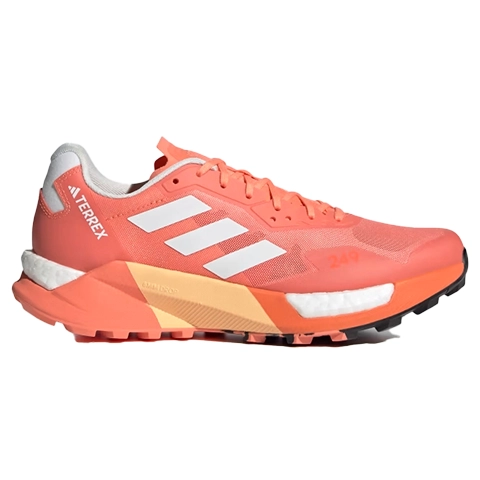
Key Specs
Weight: 11.88 ounces (337 grams) per shoe
Price: $$
PROS
✅ Great grip
✅ Comfortable
CONS
❌ Relatively heavy
The adidas Terrex trail shoes are a top pick built for serious outdoor adventures. Created with help from ultra runner athletes, they combine strength and efficiency.
The break-in period made my wife’s heel bleed some. But after a few weeks, these became one of the most comfy shoes she’s owned. She’d go a size up since they run small.
A key feature is the 7-point lacing system that makes them fit securely like an extension of your foot. The Continental Rubber outsole also gives extraordinary traction in all conditions, from start to finish.
While the shoes offer substantial grip, their slightly heavier build doesn’t restrict your potential. With durability and trail-ready traction, the Terrex help you push your limits on rugged terrain.
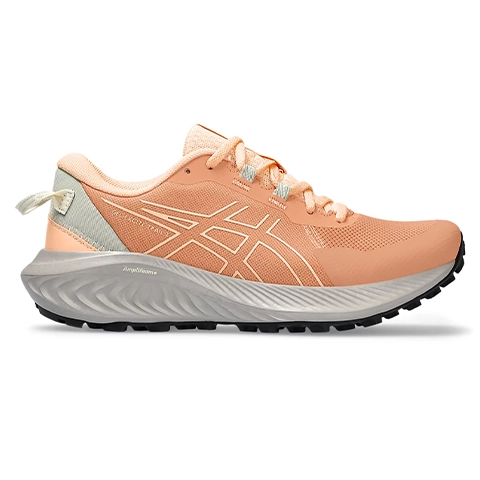
Key Specs
Weight: 8.75 ounces (248 grams) per shoe
Price: $
PROS
✅ Affordable
✅ Comfortable
CONS
❌ Requires break-in
The ASICS GEL-EXCITE TRAIL 2 are a lightweight option well-suited for hikers seeking adventure off-road. Specifically designed for trail running, these shoes provide stability on uneven terrain with a sturdy upper and supportive overlays.
The midsole utilizes AMPLIFOAM PLUS technology to deliver enhanced cushioning and a higher platform for trail comfort. The lugged outsole pattern also supplies reliable grip on natural trails.
Some wearers report needing a break-in period to reach optimal performance. However, others find the shoes comfortable right out of the box with no blister issues.
While more cushioning would benefit long miles, the affordable GEL-EXCITE TRAIL 2 offer excellent value as versatile, grippy trail companions.
When selecting trail running shoes for hiking, there are several key factors to consider:
Terrain Type
Weight
Cushioning
Heel-to-Toe Drop
Fit and Sizing
Selecting trail runners suited for how and where you hike will provide the optimal blend of traction, stability, cushioning and comfort.
Also, if you are looking for waterproof options, check our TOP 5 guide here.
While sturdy hiking boots were once the standard footwear for hiking, advancements in trail running shoe technology have made them a viable option for most hikers. Trail running shoes provide sufficient traction, stability and arch support for hiking while weighing less than boots. Unless you are carrying very heavy loads or hiking extremely rough terrain that demands ankle protection, trail running shoes can work just as well as boots and be more comfortable. Their sneaker-like feel makes it easier to go the distance. Ultimately, choose footwear based on the unique support needs for your feet and ankles as well as the types of trails you hike most.
To properly break in new women’s hiking shoes, first wear them on short walks around your neighborhood to identify any rubbing spots. Apply moleskin pads to these hot spots for your first few real hikes. Pack extra socks to change when your feet get sweaty to prevent blisters. Keep your first hike short, stopping frequently to air out your feet. Increase distance gradually over multiple hikes as the shoes conform to your feet. Apply waterproofing spray after each use during the break-in phase. With this approach, your new hiking shoes will soon feel like a custom fit.
When picking women’s hiking shoes, focus on getting the right fit, weight, grip, support, and comfort. Look for shoes that are light but still give good support and have a breathable top that fits the shape of a woman’s foot well. Check for stability features like padding around the ankle and a secure lacing system. The bottom of the shoe should have grips that help you keep your footing on different types of ground, with lugs placed strategically. Cushioning in the middle of the shoe helps lessen tiredness when walking long distances. It’s important to get the correct size and break in your shoes properly to minimize blisters and stay comfortable all day while hiking.